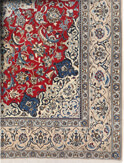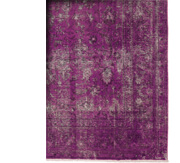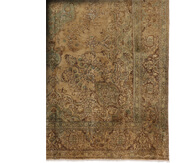Types of Rug Knots Used in Persian Carpets
When looking at a Persian carpet, the quality of the weaving is often evident by the way the knots are executed. Knotting is an art form in itself, with skilled weavers deftly tying between 8,000 and 12,000 knots per day. Carpet quality is often evaluated by the number of knots per square inch. Actually, the knot density does not define a rug's overall quality. The thickness and quality of the yarn can affect knot count. For example, a thick yarn may yield a rug of higher quality but lower knot count.
Persian and Turkish Knots
There are two common types of knotting used in oriental carpets, the
symmetrical, or Turkish knot, and the asymmetrical, or Persian knot. The
Persian knot, also called a Sennah knot, is more often used in
executing graceful, curvilinear designs. The Turkish knot, also called a
Ghiordes knot, is more often used in geometrical designs.
Persian, or asymmetrical, knots are made by wrapping one end of yarn
around a warp thread, leaving the other end loose. Each end is brought
up through adjacent warps. Turkish, or symmetrical, knots wrap each end
of yarn around adjacent warp threads and bring the ends up through the
middle between the two warps. To secure the yarn, weft threads are woven
between rows of knots and pressed down. After the carpet is woven, the
ends are trimmed. These ends create the carpet's pile.
Other Types of Knots
Other types of knots include the Jufti knot that wraps yarn around pairs
of warp threads instead of single threads. The Tibetan knot is woven by
placing a rod on top of the warp. The threads are woven between warps
and brought around the rod. One row of knots is made using a continuous
thread. After the row is complete, the loops around the rod are cut.
This creates the knot.
When you look at handmade Persian carpets, knowing the type of knot used
in weaving may help identify the place it was made. However, all types
of knots render beautiful, one-of-a-kind works of art.






